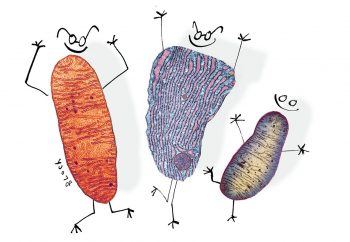Elie Dolgin in Nature:
 Nobody paid much attention to Jean Vance 30 years ago, when she discovered something fundamental about the building blocks inside cells. She even doubted herself, at first. The revelation came after a series of roadblocks. The cell biologist had just set up her laboratory at the University of Alberta in Edmonton, Canada, and was working alone. She thought she had isolated a pure batch of structures called mitochondria — the power plants of cells — from rat livers. But tests revealed that her sample contained something that wasn’t supposed to be there. “I thought I’d made a big mistake,” Vance recalls.
Nobody paid much attention to Jean Vance 30 years ago, when she discovered something fundamental about the building blocks inside cells. She even doubted herself, at first. The revelation came after a series of roadblocks. The cell biologist had just set up her laboratory at the University of Alberta in Edmonton, Canada, and was working alone. She thought she had isolated a pure batch of structures called mitochondria — the power plants of cells — from rat livers. But tests revealed that her sample contained something that wasn’t supposed to be there. “I thought I’d made a big mistake,” Vance recalls.
After additional purification steps, she found extra bits of the cells’ innards clinging to mitochondria like wads of chewing gum stuck to a shoe. The interlopers were part of the endoplasmic reticulum (ER) — an assembly line for proteins and fatty molecules. Other biologists had seen this, too, and dismissed it as an artefact of the preparation. But Vance realized that the pieces were glued together for a reason, and that this could solve one of cell biology’s big mysteries. In a 1990 paper, Vance showed that the meeting points between the ER and mitochondria were crucibles for the synthesis of lipids1. By bringing the two organelles together, these junctions could serve as portals for the transfer of newly made fats. This would answer the long-standing question of how mitochondria receive certain lipids — they are directly passed from the ER.
More here.
